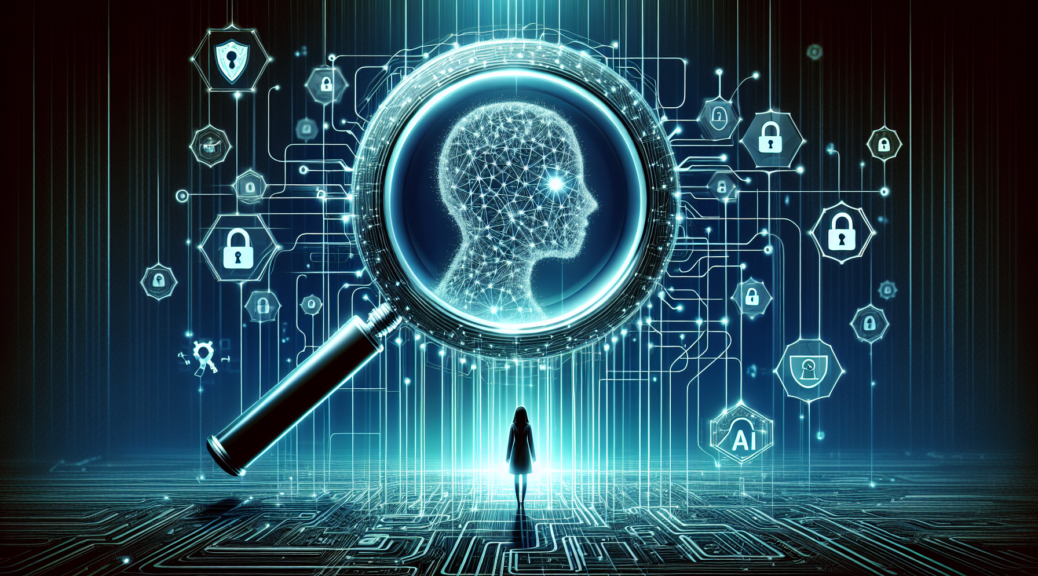
AI Vulnerability Detection Raises Cybersecurity Concerns Warns Ex-US Cybersecurity Official
AI Vulnerability Detection Raises Cybersecurity Concerns Warns Ex-US Cybersecurity Official
In recent years, Artificial Intelligence (AI) has been making waves across several sectors, promising efficient solutions and streamlined processes. In the realm of cybersecurity, it is anticipated that AI-powered tools will strengthen system defenses against the constant, evolving threats in the digital landscape. However, a former US cyber official is ringing alarm bells, cautioning that rather than being the panacea everyone hopes for, AI-driven vulnerability detection may, in fact, exacerbate the problem. This article delves into these concerns and their potential implications for businesses and individuals alike.
The Promises of AI in Cybersecurity
There has been significant excitement surrounding the integration of AI in cybersecurity operations. The capabilities of AI to process expansive datasets and identify patterns that may elude human analysts make it a tempting option for protecting digital infrastructures. Specifically, AI-powered tools are lauded for the following benefits:
- Speed and Efficiency: AI can process vast amounts of data rapidly, enabling quicker identification and response to potential threats.
- Accuracy: Advanced AI models can minimize false positives, ensuring that security teams focus on genuine vulnerabilities.
- Adaptability: AI can learn from past incidents, improving its response to evolving threats.
With these capabilities, many believe AI could revolutionize cybersecurity by proactively detecting vulnerabilities and thwarting attacks before they even occur.
The Dangers of Over-Reliance on AI
Despite the promising potential, the former US cyber official expresses concern that the reliance on AI for vulnerability detection may lead to several unforeseen complications:
1. Accelerated Arms Race
The integration of AI in cybersecurity is likely to spur an accelerated arms race between cyber defenders and attackers. While defenders might employ AI to patch vulnerabilities, attackers can use similar technology to identify weaknesses and develop exploits, potentially bypassing traditional security measures. In essence, AI might escalate the sophistication and frequency of cyber attacks rather than mitigate them.
2. Dependence Complexities
With organizations increasingly relying on AI for cybersecurity, there’s a risk of developing a dependence on these systems. Over-reliance might lead security teams to become complacent, trusting AI systems to catch and respond to all threats. Such complacency can be perilous, especially if cybercriminals find ways to manipulate AI systems or exploit unnoticed vulnerabilities in the AI itself.
3. Lack of Human Oversight
AI systems, for all their prowess, are not infallible. The absence of human oversight in the decision-making process can result in erroneous assessments or actions by AI tools. In cases where automated systems make security decisions without human verification, there’s a risk of incorrect responses to threats or undue reliance on flawed AI predictions.
4. Potential Biases in AI Models
Given that AI models learn from historical data, there’s a possibility of these systems inheriting and amplifying existing biases in the data. This could result in AI systems unfairly targeting certain behaviors as suspicious or overlooking genuine threats due to misplaced assumptions within their learning models. Addressing these biases is critical to ensure balanced and fair cybersecurity measures.
The Path Forward: Balancing AI and Human Intelligence
In light of these potential pitfalls, it’s imperative for organizations to not view AI as the ultimate security solution. Instead, a collaborative approach that combines AI’s capabilities with human insight and oversight is essential:
- Human-AI Collaboration: Security teams should work alongside AI systems, verifying their insights and understanding their limitations. This partnership ensures that the final decision-making process is informed and balanced.
- Continuous Training: As cyber threats evolve, so must the AI models. Regular updates and training of AI systems are essential to keep up with new tactics employed by cybercriminals.
- Transparent Algorithms: Ensuring that AI systems are based on transparent algorithms helps in identifying and correcting any biases. It allows organizations to understand decision-making processes and trust AI’s role in security.
Conclusion
The advent of AI in cybersecurity undoubtedly brings with it the potential for substantial advancements. However, as highlighted by the former US cyber official, it’s crucial to approach AI-powered vulnerability detection with a carefully measured strategy, reinforcing AI’s role with human oversight and understanding. By doing so, organizations can harness AI’s capabilities while mitigating potential risks, ensuring robust, adaptive, and fair cybersecurity frameworks for a safer digital future.
In this rapidly changing digital era, the key to maintaining security lies not solely in cutting-edge technology, but in the prudent and informed integration of both human and machine capabilities.



